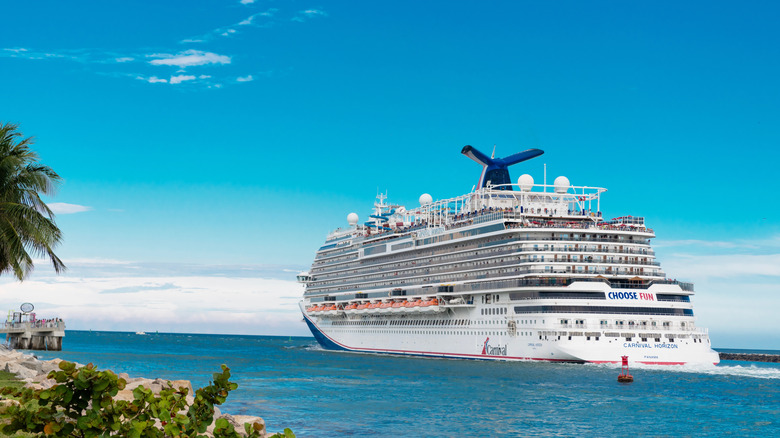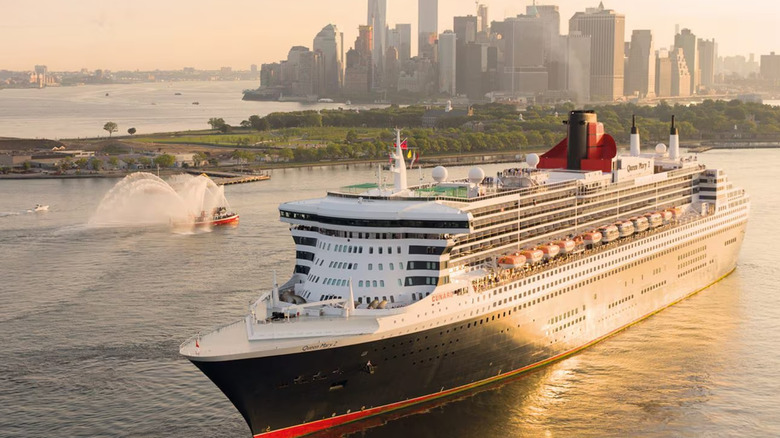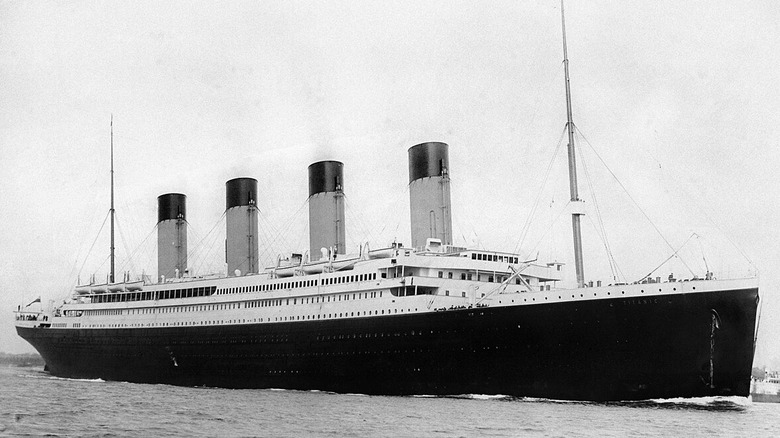Why Today's Cruise Ships Are Slower Than Classic Ocean Liners
Cruise ships are one of the best luxury vacations you can take, offering the experience of a full-fledged resort while taking you to exotic locations. The biggest cruise ships feature enticing amenities like lavish staterooms, multiple restaurants offering cuisines from around the globe, water parks, infinity pools, and much more. While modern cruise ships offer unmatched comfort, they are considerably slower than the classic ocean liners from a half a century or more ago.
Cruise ships are built to prioritize comfort over speed. Enjoying the activities on board or simply relaxing on a deck chair is a huge part of the cruise experience, and racing to waypoints at maximum speed would cut that short and make the journey less comfortable for passengers. On the other hand, ocean liners prioritize faster travel above nearly everything else to quickly transport passengers to their destination. As a result, cruise ships and ocean liners differ in hull design and engine configuration.
Moreover, cruise ships make money when passengers spend time on the ship and pay to enjoy premium services, so going slow is a win-win for both passengers and cruise ship operators. Additionally, cruise ships use less fuel when they travel slowly. This makes journeys cheaper for operators and helps them produce fewer emissions.
Cruise ships and ocean liners differ in design
Today, the terms cruise ship and ocean liner are often used interchangeably, but most large ships on the water are cruise ships. In fact, Cunard's flagship Queen Mary 2 — built in 2004 — is the only true ocean liner still in service today. However, cruise ships and ocean liners differ in a variety of technical and design aspects, reflecting their priorities. As ocean liners are built to travel quickly through harsh weather, they sport a tall freeboard (the distance from the waterline to the top deck) and hull to keep the passengers away from the waves. Moreover, ocean liners have a sharp prow and deep draft to cut through large waves. This makes them fast and gives them stability in choppy water.
By contrast, cruise ships have a comparatively lower freeboard and less draft, as they aren't designed to take on rough conditions on the open ocean. Additionally, cruise ships have bows designed to make them ride over waves rather than cutting through them. This helps them to enter shallow waters, but comes at the cost of some speed.
The Titanic was faster than most modern cruise ships
Maritime travel was filled with horror stories of unhygienic conditions, cramped quarters, and frequent passenger deaths before ocean liners became common. Early transatlantic journeys relied on the use of sails for propulsion, resulting in slow and unreliable travel. Transoceanic journeys would often take weeks to complete, during which the travelers were at the nature's mercy. Most modern ships no longer use sails, with steam power taking over during the early 19th century and diesel engines now powering most large boats.
These ships can travel much faster and take shorter routes than sailing vessels could, resulting in much shorter and more consistent travel times. Ocean liners are built to travel fast from point A to point B, so constant advancements have been made to crafts and their engines to prioritize speed. By the 1950s, some ocean liners could sail at 30 knots (about 34.5 mph) without breaking a sweat. In 1951, the SS United States, powered by a world-class engine, crossed the Atlantic in just over 3 1/2 days, averaging an unparalleled speed of 34.51 knots (39.71 mph). In comparison, most cruise ships go at an average speed of 20 knots (23 mph). That's about 3 knots slower than the Titanic, the famous White Star ocean liner that sank in 1912. Modern sea travel is seen as an experience to be savored, while transatlantic passages can now be made through the air in a matter of hours and not days or weeks.


